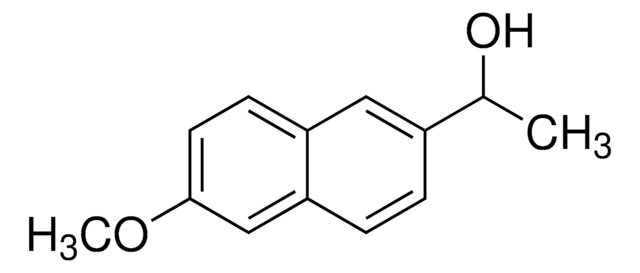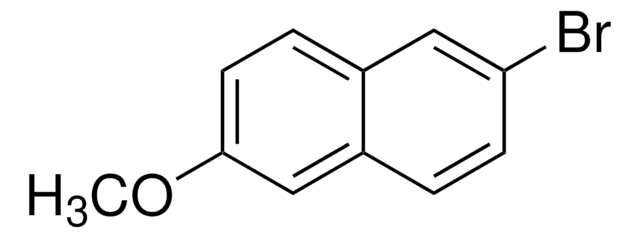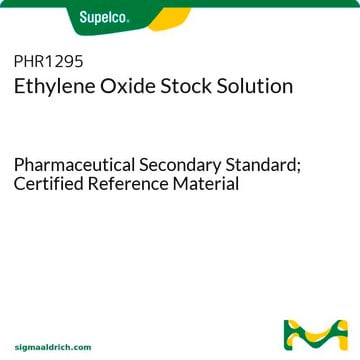82320
(±)-Propylenoxid
puriss. p.a., ≥99.5% (GC)
Synonym(e):
(±)-Methyloxiran, 1,2-Epoxypropan
About This Item
Empfohlene Produkte
Dampfdichte
2 (vs air)
Dampfdruck
29.43 psi ( 55 °C)
8.59 psi ( 20 °C)
Qualität
puriss. p.a.
Assay
≥99.5% (GC)
Form
liquid
Selbstzündungstemp.
1378 °F
Expl.-Gr.
37 %
Verunreinigungen
≤0.1% water
Abdampfrückstand
≤0.005%
Brechungsindex
n20/D 1.366 (lit.)
n20/D 1.366
bp
34 °C (lit.)
mp (Schmelzpunkt)
−112 °C (lit.)
Dichte
0.83 g/mL at 25 °C (lit.)
Kationenspuren
Al: ≤0.5 mg/kg
Ba: ≤0.1 mg/kg
Bi: ≤0.1 mg/kg
Ca: ≤0.5 mg/kg
Cd: ≤0.05 mg/kg
Co: ≤0.02 mg/kg
Cr: ≤0.02 mg/kg
Cu: ≤0.02 mg/kg
Fe: ≤0.1 mg/kg
K: ≤0.5 mg/kg
Li: ≤0.1 mg/kg
Mg: ≤0.1 mg/kg
Mn: ≤0.02 mg/kg
Mo: ≤0.1 mg/kg
Na: ≤0.5 mg/kg
Ni: ≤0.02 mg/kg
Pb: ≤0.1 mg/kg
Sr: ≤0.1 mg/kg
Zn: ≤0.1 mg/kg
Versandbedingung
wet ice
Lagertemp.
2-8°C
SMILES String
CC1CO1
InChI
1S/C3H6O/c1-3-2-4-3/h3H,2H2,1H3
InChIKey
GOOHAUXETOMSMM-UHFFFAOYSA-N
Suchen Sie nach ähnlichen Produkten? Aufrufen Leitfaden zum Produktvergleich
Allgemeine Beschreibung
Anwendung
- Poly(3-hydroxybutyrat), ein biologisch abbaubarer und biokompatibler Polyester, durch Carbonylierungspolymerisation.
- Poly(propylen-ram-ε-caprolactoncarbonat) (PPCL) und Poly(propylencarbonat) (PPC), die als Arzneimittelträger eingesetzt werden können.
Anwendung
Signalwort
Danger
Gefahreneinstufungen
Acute Tox. 3 Dermal - Acute Tox. 3 Inhalation - Acute Tox. 4 Oral - Carc. 1B - Eye Irrit. 2 - Flam. Liq. 1 - Muta. 1B - STOT SE 3
Zielorgane
Respiratory system
Lagerklassenschlüssel
3 - Flammable liquids
WGK
WGK 3
Flammpunkt (°F)
-36.4 °F - Equilibrium method
Flammpunkt (°C)
-38 °C - Equilibrium method
Persönliche Schutzausrüstung
Faceshields, Gloves, Goggles
Analysenzertifikate (COA)
Suchen Sie nach Analysenzertifikate (COA), indem Sie die Lot-/Chargennummer des Produkts eingeben. Lot- und Chargennummern sind auf dem Produktetikett hinter den Wörtern ‘Lot’ oder ‘Batch’ (Lot oder Charge) zu finden.
Besitzen Sie dieses Produkt bereits?
In der Dokumentenbibliothek finden Sie die Dokumentation zu den Produkten, die Sie kürzlich erworben haben.
Kunden haben sich ebenfalls angesehen
Unser Team von Wissenschaftlern verfügt über Erfahrung in allen Forschungsbereichen einschließlich Life Science, Materialwissenschaften, chemischer Synthese, Chromatographie, Analytik und vielen mehr..
Setzen Sie sich mit dem technischen Dienst in Verbindung.











